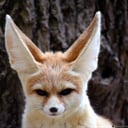How many stomachs does an ant have ?
The ant has 2 stomachs. One to store food for itself and the other to store food it has to share with the others in the colony.
They are eusocial insects of the family Formicidae and, along with wasps and bees, belong to the order Hymenoptera.
Ants evolved from wasp-like ancestors in the Cretaceous period, about 99 million years ago, and have diversified after the rise of the flowering plants. More than 12,500 of an estimated total of 22,000 have been classified.
They are easily identified by their elbowed antennae and the node-like structure that form their waists.
They form colonies that range from a few predatory individuals living in small natural cavities to highly organised colonies that may occupy large territories and consist of millions of individuals, the wingless worker females (ergates), soldiers (dinergates), some fertile males called drones (aner) and one or more fertile females called queens (gynes).
They have life a span from 4 to 12 years for the pharaoh ant and 15 years for the black ant.
The colonies are often called superorganisms because they appear to operate as a unified entity, collectively working together to support the colony.
They have colonised almost every landmass on earth but for the Antarctic and a few inhospitable islands and may form up to 15-25% of the territorial animal biomass.
Their success has been attributed to their ability to work together, modify their habitats, tap resources and defend themselves.
More Info:
en.wikipedia.org







